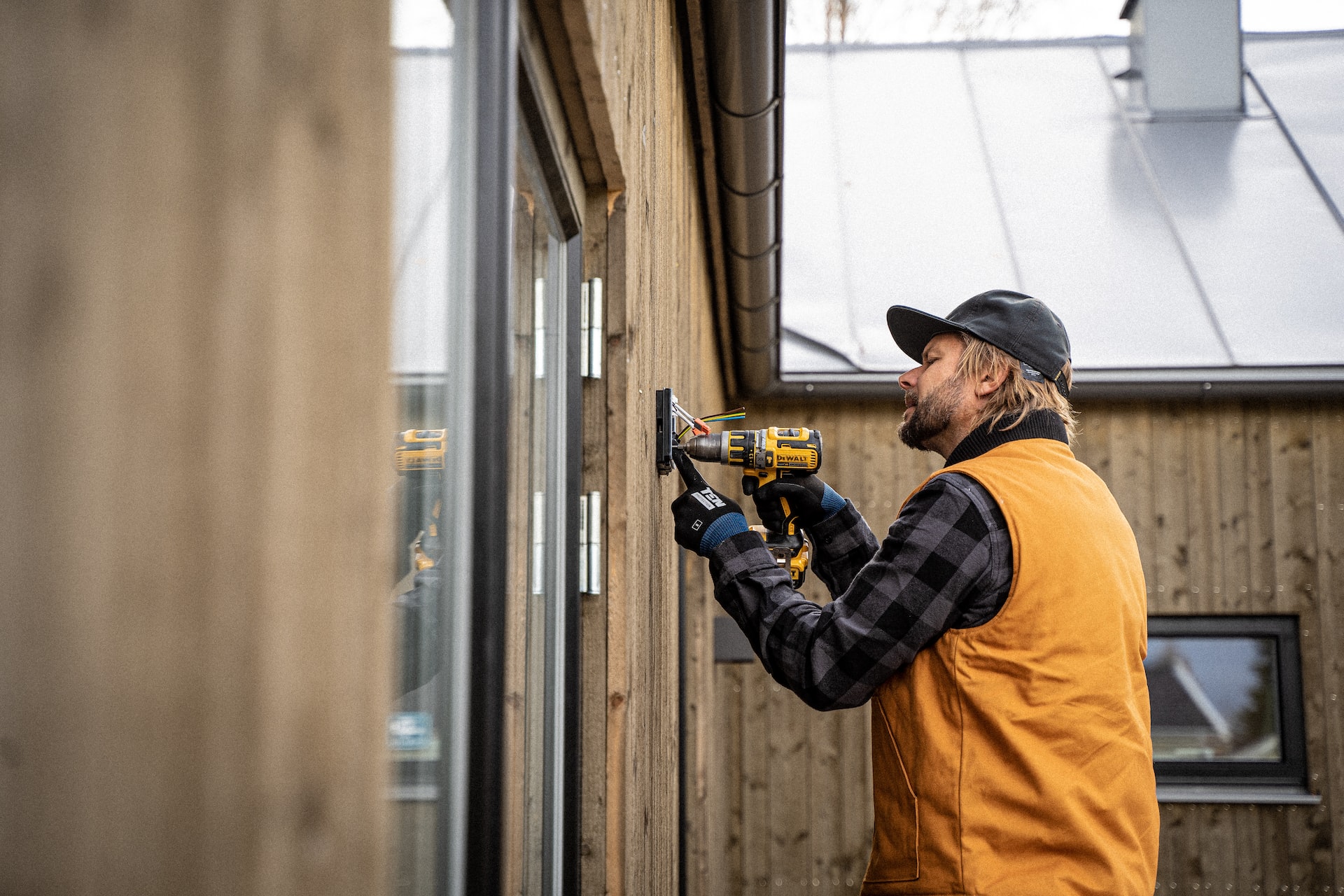Real Estate
How Are Housing Trends Evolving in the Dominican Republic? Explore With Marvin van Kalsbeek, Real Estate Entrepreneur

Do you know that the Dominican Republic, known for its stunning beaches and vibrant culture, harbors a hidden evolution in its housing trends?
Traditionally, the families of the Dominican Republic preferred traditional housing that focused on comfort and homes with classic designs, reflecting the cultural emphasis on familial bonds and community living. However, the winds of change are gently reshaping these preferences.
The Rise of Sleek Spaces: Modern Living Takes Center Stage
Nowadays, most individuals express a liking for contemporary, streamlined living spaces. The allure of modern amenities and the rising wave of minimalism around the globe are pushing the demand for sleek, space-efficient apartments and condos through the roof.
This brings us to Marvin van Kalsbeek, a real estate entrepreneur whose journey aligns seamlessly with this nuanced shift in housing dynamics. Venturing into the Dominican Republic’s real estate market, Marvin recognized the potential for growth and innovation in catering to evolving preferences.
But, this shift is not only about aesthetics; it also caters to the needs of the remote workforce increasingly drawn to this vibrant region.
Surveying the Real Estate Horizon: A Macro View
The Dominican Republic has experienced robust growth driven by tourism and foreign investments. Marvin notes, “With around 10 million annual visitors and a population of 11 million, the influx of tourists creates a potential market for real estate services.”
Foreign investments, especially in coastal areas, have fueled the development of luxurious beachfront properties. These properties cater to the desires of both locals and international buyers seeking a slice of paradise.
Marvin believes the post-pandemic era has ushered in a new paradigm for the Dominican Republic’s real estate market. As remote work becomes more common, individuals are no longer bound by the constraints of living close to their workplaces. This shift has led to an enhanced interest in properties beyond bustling cities, with many now seeking spacious homes nestled in serene landscapes.
Economic development initiatives and investor-friendly policies position the Dominican Republic as a favorable destination for property investment. To stay on top of evolving trends in this dynamic real estate landscape, Marvin leverages advanced technology through his platform, AnyHouse.
AnyHouse: A Unified Platform Redefining Real Estate Exploration
Within this evolving landscape, Marvin’s AnyHouse emerges as a transformative force in the Dominican Republic’s real estate scene. AnyHouse is an innovative website and app designed to serve as a unified platform for individuals within and outside the Dominican Republic to discover all available houses in the country.
The platform goes beyond traditional listings, offering brokerages and construction companies the opportunity to register for free, providing access to robust CRM software. This not only streamlines their daily operations but also boosts sales. AnyHouse’s advanced technology includes a robot that detects changes on brokerage websites, ensuring the platform remains up-to-date without requiring additional content management.
The Dominican Republic’s housing trends are transforming, leaning towards sleek, modern living spaces. Marvin’s platform, AnyHouse, serves as a unified platform, redefining real estate exploration within and outside the Dominican Republic.
If you want to explore what the Dominican Republic offers, visit the AnyHouse website or download the app from the store. For updates on Marvin’s journey, follow him on LinkedIn.

Finance
Real Estate Crowdfunding: A Beginner’s Guide to Investing

In the UK, real estate crowdfunding has become a popular way for more people to get into property investment without needing a lot of money. This way of investing lets people pool their money together online to invest in real estate projects. It’s a big change from the past when only people with a lot of money could invest in property.
How real estate crowdfunding works in the UK, focusing on its benefits, like making property investment more accessible to regular people, and its challenges.
What is Real Estate Crowdfunding?

Real estate crowdfunding is a modern investment approach where numerous individuals pool their financial resources to fund property-related ventures. This process is predominantly conducted via digital platforms that serve as a bridge, linking potential investors with property developers or real estate firms.
The scope is diverse, encompassing everything from residential homes to commercial real estate projects. This variety enables investors to spread their risks across different types of properties, thereby adding a layer of diversification to their investment portfolios. Real Estate crowdfunding democratizes the property investment market, making it accessible to a broader range of investors.
How Real Estate Crowdfunding Works?

1. Choosing a Platform
Different platforms offer various types of projects and have their own rules, fees, and minimum investment amounts. It’s important to choose one that matches your investment goals and risk tolerance. For example, some platforms may focus on commercial real estate, while others might specialize in residential projects. Researching and comparing different platforms based on their track record, fees, and the types of projects they offer is crucial in making an informed decision.
2. Project Selection
Once you’ve chosen a platform, the next step is to explore the real estate projects available for investment. These platforms provide detailed information about each project, including the expected returns, the time frame of the investment, and the risks involved. It’s essential to carefully assess these details to understand the potential profitability and risks. Projects can vary widely, from developing new properties to renovating existing ones, and each will have its own set of dynamics in terms of potential return and risk.
3. Investing
After selecting a project that aligns with your investment criteria, you can then proceed to invest a specified minimum amount. This amount varies from project to project and platform to platform. It’s important to only invest money that you can afford to have tied up for the duration of the project, as real estate investments are not always liquid.
4. Returns on Investment
The final aspect is the return on investment, which is contingent on the project’s performance. Returns can come in various forms, such as rental income if the property is leased out, interest payments if the investment is structured as a loan, or profits from the sale of the property. The nature of the returns and the timeline can vary, so understanding the specifics of how and when you’ll receive returns is key before committing to an investment.
Pros of Real Estate Crowdfunding

1. Lower Entry Point
In real estate crowdfunding, the lower initial investment required significantly broadens the access to property markets. Unlike traditional avenues that often demand substantial capital, crowdfunding allows individuals to start investing with much smaller amounts, making the prospect of real estate investment feasible for a wider range of people.
2. Diversification
Investors in real estate crowdfunding benefit from diversification, as they can spread their funds across various types of properties and locations. This approach minimizes risks compared to investing in a single property, offering a buffer against market fluctuations and location-specific downturns.
3. Managed Investments
Crowdfunding platforms typically involve projects overseen by real estate professionals, offering a layer of expertise and management. This means investors can rely on experienced hands to guide the project, reducing the complexities and time commitment usually required in property management.
4. Transparency
One of the key benefits of real estate crowdfunding is the high level of transparency provided by platforms. Detailed project information, including financial projections and risk assessments, is readily available, allowing investors to make informed decisions based on comprehensive data.
5. Accessibility
Real estate crowdfunding simplifies the investment process, making it more accessible, especially for those new to property investment. This approach reduces the often intimidating complexities associated with traditional real estate investing, making it more approachable for a broader audience.
6. Potential High Returns
Crowdfunding in real estate can potentially yield higher returns compared to some traditional investments. This is particularly true in booming property markets, where the collective investment can tap into profitable opportunities that might otherwise be out of reach.
7. Passive Income
Investing in rental properties through crowdfunding offers a source of passive income, appealing to those looking for a hands-off investment. It provides the opportunity to earn regular returns without the need for direct involvement in property management.
8. Learning Opportunity
For beginners, real estate crowdfunding is an excellent educational tool. It offers a practical and low-risk environment to learn about property investment dynamics, market trends, and investment strategies.
9. Social Impact
Many crowdfunding projects are geared towards social or environmental impact, aligning investment opportunities with ethical and sustainable development goals. This approach allows investors to contribute to meaningful projects like affordable housing or eco-friendly buildings.
10. Innovative Investment
As a part of the evolving fintech landscape, real estate crowdfunding represents a modern, innovative approach to property investment. It leverages technology to streamline processes, making investment opportunities more accessible and efficient.
11. Flexibility
Real estate crowdfunding offers a variety of investment options to suit different risk appetites and financial goals. From conservative strategies focusing on stable, income-generating properties to more adventurous projects with higher risk-reward profiles, there’s something for every investor.
12. Tax Efficiency
Investing through real estate crowdfunding can offer tax efficiencies under certain conditions. Investors should consult with financial advisors to understand how these investments can be structured to maximize tax benefits.
13. Community Building
This investment method allows for direct involvement in local development projects, enabling investors to play a part in the growth and enhancement of communities. It’s a way to contribute to local economies and see the tangible impact of investment decisions.
Cons of Real Estate Crowdfunding in the UK

1. Market Risk
Investors in real estate crowdfunding are exposed to the inherent fluctuations of the real estate market. While these investments can yield substantial returns, they are also susceptible to downturns in property values, impacting the overall performance of the portfolio.
2. Liquidity Issues
Compared to traditional investments, real estate crowdfunding is less liquid. Investors typically commit their funds for longer periods, often with lock-in periods, limiting the ability to access capital quickly in case of unexpected financial needs.
3. Platform Dependence
The success of real estate crowdfunding investments heavily relies on the performance and stability of the chosen platform. If the platform encounters issues or goes out of business, investors’ funds may be at risk, highlighting the importance of platform due diligence.
4. Limited Control
Investors in crowdfunding have limited control over the management of the underlying properties. Decisions regarding property management, renovation, or resale are typically made by the project sponsors, leaving investors with little say in these matters.
5. Regulatory Uncertainty
The real estate crowdfunding industry is subject to evolving regulations in the UK. Changes in regulations can impact the way these investments are structured and governed, adding an element of uncertainty to the investment landscape.
6. Risk of Platform Failure
In the event of a platform’s failure, investors may face significant risks. This could result in potential financial losses or complications in the management of ongoing projects, underscoring the importance of selecting reputable platforms.
7. Complexity of Choices
The plethora of real estate crowdfunding projects available can be overwhelming. Investors must navigate a diverse range of investment opportunities, each with its unique characteristics, making the selection process a complex endeavor.
8. No Guaranteed Returns
As with any investment, real estate crowdfunding does not guarantee returns. Project performance can vary, and investors should be prepared for the possibility of lower-than-expected returns or even losses.
9. Potential for Delays
Real estate projects can face delays due to various factors, including construction issues, permitting challenges, or unexpected market conditions. These delays can affect projected returns and the timing of income distribution.
10. Due Diligence Required
Investors in real estate crowdfunding must conduct thorough due diligence on each project they consider. This includes researching the project sponsor’s track record, assessing the property’s potential, and reviewing the associated risks. Due diligence is a critical aspect of making informed investment decisions in this domain.
Conclusion
Real estate crowdfunding in the UK offers a novel and accessible way to enter the property market, bringing its own set of rewards and challenges. It’s essential for prospective investors to conduct diligent research, understand the risks involved, and consider their investment goals before diving into this burgeoning sector. With its growing popularity, real estate crowdfunding continues to reshape the landscape of property investment in the UK.
Real Estate
Real Estate Photography: A Complete Guide

Real estate photography stands out as a key player in the property market, offering a powerful tool to highlight a home’s best qualities and attract potential buyers. This unique form of photography blends technical prowess with an artistic eye, capturing the true essence of a home in a way that traditional photography doesn’t.
In This article you know the essential aspects of real estate photography, sharing insightful tips on how to take captivating and appealing pictures. These images are not just photographs; they are the first impression a property makes on potential buyers.
What Does Mean By Real Estate Photography?

Real estate photography transcends mere picture-taking; it involves weaving a visual narrative that accentuates a property’s unique personality and allure. This form of photography plays a crucial role in shaping the first impressions of a home, significantly influencing the initial curiosity and interest of prospective buyers or tenants.
It requires a keen eye for detail and a deep understanding of how to present spaces in their most inviting and lively form. Unlike standard photography, real estate photography demands the ability to showcase rooms and exteriors in a way that is both authentic and appealing, highlighting the distinctive features and potential of a property.
Tips to Become a Master Of Real Estate Photography

1. Preparing for the Shoot
For a successful real estate photo shoot, good preparation is key. It’s important to choose the right time for the shoot, when the natural light is best, as it makes the property look warm and welcoming. Before taking pictures, tidy up and arrange the furniture nicely, as this can really make the photos look better. You’ll need some basic equipment like a good camera, a lens that can capture wide shots, a tripod to keep the camera steady, and some extra lights for rooms that are a bit dark. This preparation helps in taking great pictures that show the property in the best way.
2. Camera Settings and Techniques
Getting the camera settings right is crucial for professional-looking real estate photos. To avoid grainy pictures, keep the ISO setting low. Use a smaller aperture (a higher f-number) for sharp images that show detail in every part of the room. The right shutter speed helps get the perfect amount of light in your photos. When composing your shots, the rule of thirds can make them more interesting. This means imagining your image divided into nine equal segments by two vertical and two horizontal lines and placing important elements along these lines or their intersections. Also, pay attention to how light and shadows fall in the room, as balancing them well can give your photos more depth and a realistic feel.
3. Shooting Techniques for Different Areas
When taking photos of different areas in real estate photography, different techniques are needed. For inside shots, it’s important to focus on the small details. In small rooms, using a wide-angle lens helps make the room look bigger and more open. In bigger rooms, try to capture unique features like a fireplace or special shelves to show what makes the room special. For outside photos, the main aim is to make the house look inviting. Take pictures of a neat lawn, any nice plants or trees, and the general look of the house from the outside to show off its curb appeal.
4. Advanced Techniques to Take Pictures and Videos
High Dynamic Range (HDR) photography is great for dealing with different lighting in a home. It combines multiple photos taken at different exposures to create one well-balanced image. Panoramic and 360-degree photos are also useful, especially for online listings, as they give a full, immersive view of a space. Using a drone for aerial shots can give a unique view of the property and the area around it, showing off the whole landscape and making the property stand out. These advanced techniques can add a professional touch to your real estate photos.
5. Post-processing
After you’ve finished taking photos, the next important step is post-processing. This is where you edit your photos to make them look their best. Start with basic adjustments like tweaking the color balance, brightness, and contrast. This can really make your photos stand out. If you’re more experienced, you can try advanced techniques like removing things like power lines or other distractions from your photos, or blending different exposures to get a more natural and balanced look. For all this, software like Adobe Photoshop or Lightroom is really helpful. They have a lot of tools that can transform your real estate photos from good to great.
6. Legal Considerations and Ethics while Real Estate Photography
When it comes to real estate photography, it’s important to keep in mind legal and ethical considerations. First, be aware of legal issues like needing property releases, especially when you’re taking pictures of private properties or homes with unique designs. This is because the owners or designers might have certain rights over these images. Also, be careful about copyright laws to avoid any legal problems.
It’s important not to over-edit the photos. While it’s okay to make the property look its best, you shouldn’t alter the images so much that they mislead or deceive people who see them. The goal should be to represent the property accurately while still making it look appealing.
7. Building a Portfolio and Marketing Your Skills
Creating a strong portfolio is a key step in marketing your real estate photography skills. Make sure your portfolio includes a variety of property types and different photography styles. This shows potential clients that you’re versatile and capable of handling various photography needs. Building connections with real estate agents and agencies can also lead to more job opportunities.
They are often looking for photographers to help showcase their properties. Having a strong online presence is crucial. This means actively using social media to share your work and engage with your audience. Also, having a professional website where you can showcase your best work, provide contact information, and share testimonials from previous clients can really help in attracting new business. These steps can significantly increase your visibility and help you stand out in the field of real estate photography.
Conclusion
Real estate photography is an art that requires both technical know-how and a creative touch. By following these tips, photographers can hone their skills to capture stunning images that bring properties to life. Continual practice and adaptation to new trends and technologies are crucial to staying relevant in this ever-evolving field.
-

 Business3 years ago
Business3 years agoThe Most Efficient Ways To Use The Best 6 Business Keynote Presentations
-

 Apps and Software6 months ago
Apps and Software6 months agoStarbucks Partner Hours App Login Guide
-

 Entertainment6 months ago
Entertainment6 months ago15 Best IPTV Service Providers in the UK 2025
-

 Tech3 years ago
Tech3 years agoIs Forecasting A Part Of Data Science?
-

 Economy3 years ago
Economy3 years agoWhat does it mean to Dream About Pennies?
-

 Entertainment6 months ago
Entertainment6 months ago10 Best Free Video Player Apps For Apple TV
-

 Travel2 years ago
Travel2 years agoBenefits of UK Skilled Worker Visa for International Professionals
-

 Entertainment2 years ago
Entertainment2 years agoHow To Enhance Your Viewing with Video Subtitle Support
































